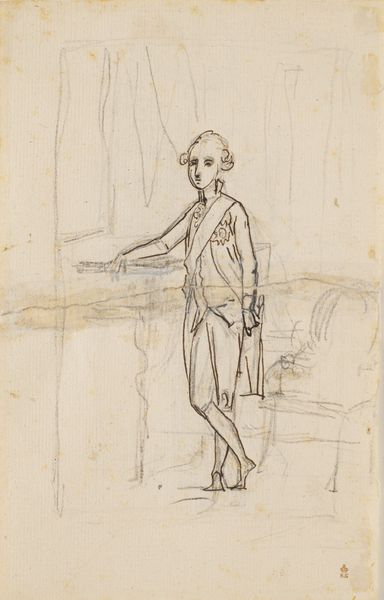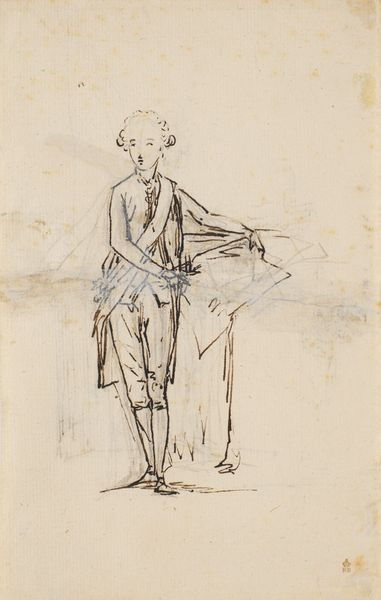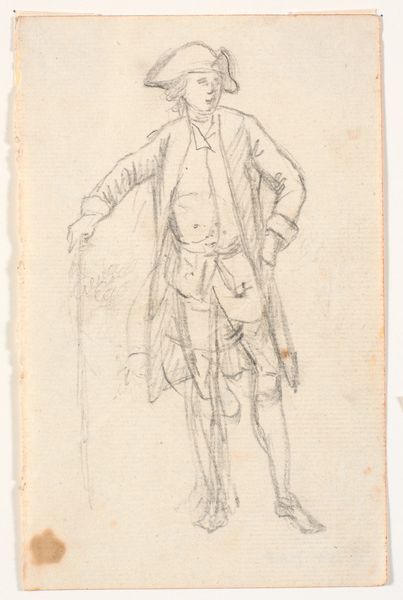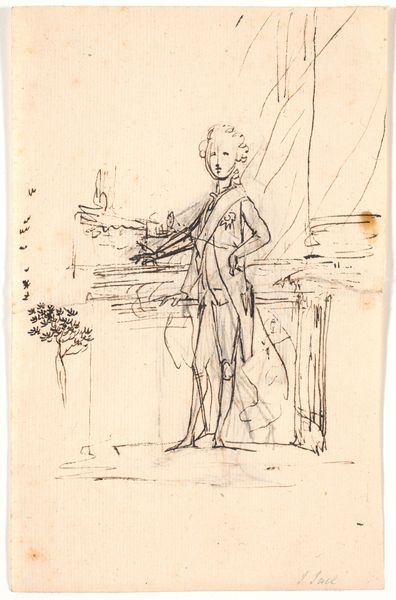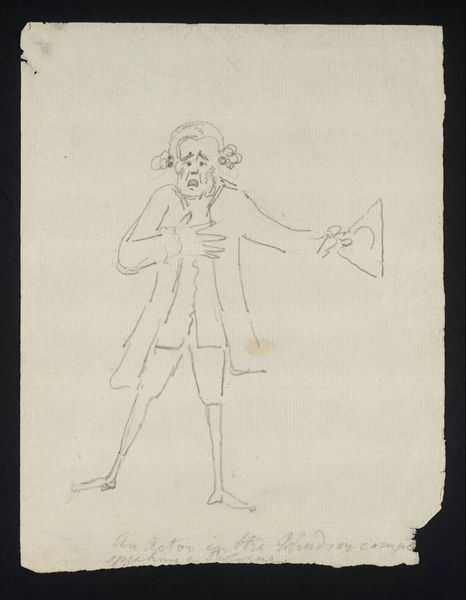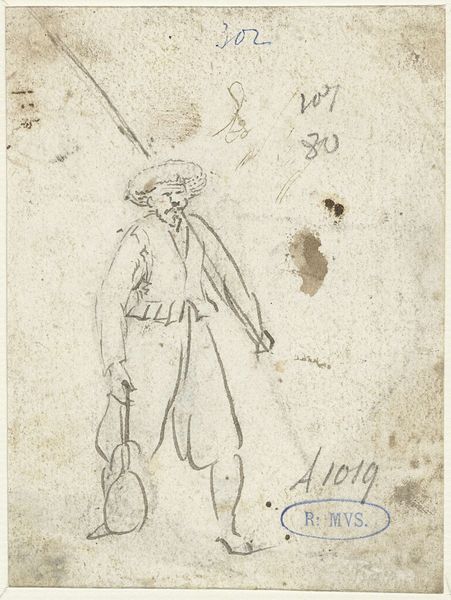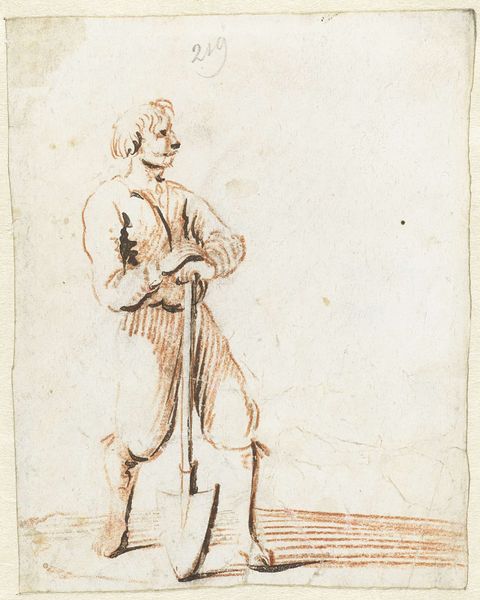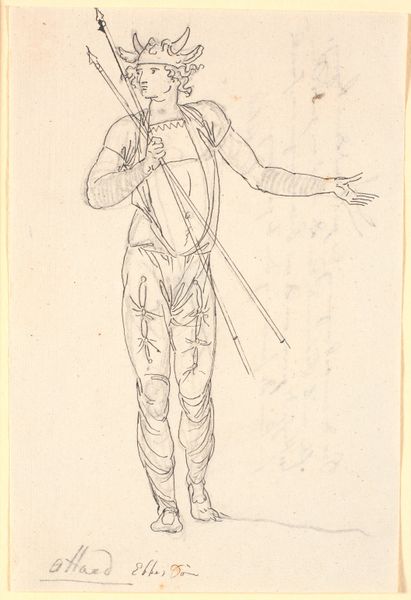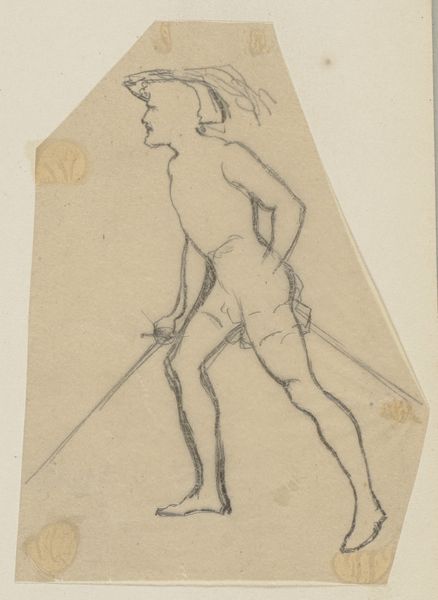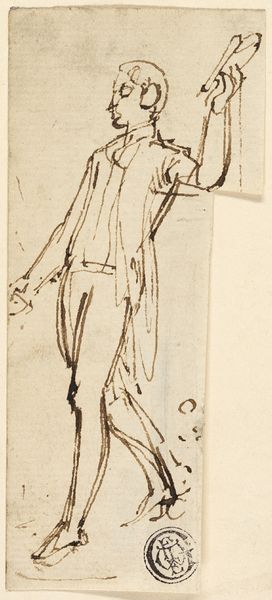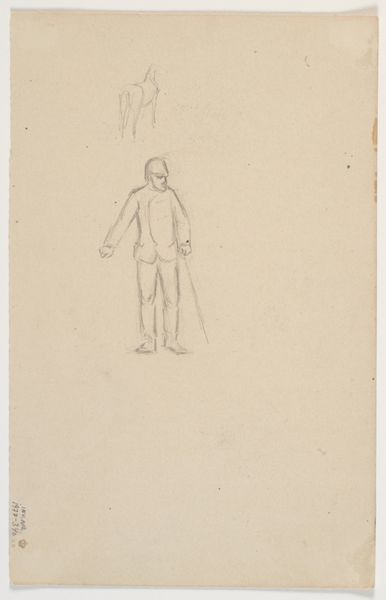
Kronprins Frederik den sjette stående en face mod venstre, med venstre hånd i siden og højre pegende indad i billedet 1781
0:00
0:00
drawing, pencil
#
portrait
#
drawing
#
neoclacissism
#
pencil sketch
#
pencil
Dimensions: 218 mm (height) x 138 mm (width) (bladmaal)
Curator: Jens Juel sketched this portrait of Crown Prince Frederik VI in 1781. Note the materials: a simple pencil on what looks like well-worn paper. What stands out to you? Editor: It has a ghostly quality, unfinished. The prince looks young, maybe a little apprehensive. His posture suggests power, but the medium itself feels so fragile, almost ephemeral. Curator: Indeed. And the very act of sketching implies a kind of immediacy, doesn’t it? Juel, deeply embedded within the Danish court, was portraying a figure destined for absolute power. Think about the political and social landscape: What narratives about leadership and legitimacy might he be subtly engaging with? Editor: Focusing on the means of production, it's striking how different this intimate drawing is from the finished, idealized portraits we often see of royalty. The sketch reveals the labor, the artistic process, laying bare the mechanics behind image construction and dissemination. Notice the visible pencil strokes; they show how identity is being shaped and molded. Curator: Exactly! It offers us a unique window into the performative aspects of power. The casualness of the sketch is also revealing. He adopts a confident pose with his hand on his hip but the medium makes it appear almost vulnerable, far from the expected grandiosity we often expect of royal portraiture. Consider how class structures of the period influenced Juel's position and approach to his royal subject. Editor: The paper itself speaks volumes. It is patinated with age and feels mass produced, a tangible link to the labor of papermaking in the 18th century, the paper mill industries. That he sketched this future ruler on humble material presents such a material contradiction. I can imagine this sketch pinned up in the studio to work on a future painting, this simple pencil portrait performing labor in preparation for the more extravagant final piece. Curator: I see your point about the contradictions. It reminds us of the tension between the everyday, the here and now, and the projected image of power. Perhaps it asks us how history itself is constructed through images like these, carefully positioned within ever shifting sociopolitical arenas. Editor: Definitely. Examining its materials and their inherent social meaning adds an interesting angle to considering its cultural weight. I look at how the means of artistic production themselves can both solidify and disrupt ingrained notions of class and artistic genius.
Comments
No comments
Be the first to comment and join the conversation on the ultimate creative platform.
